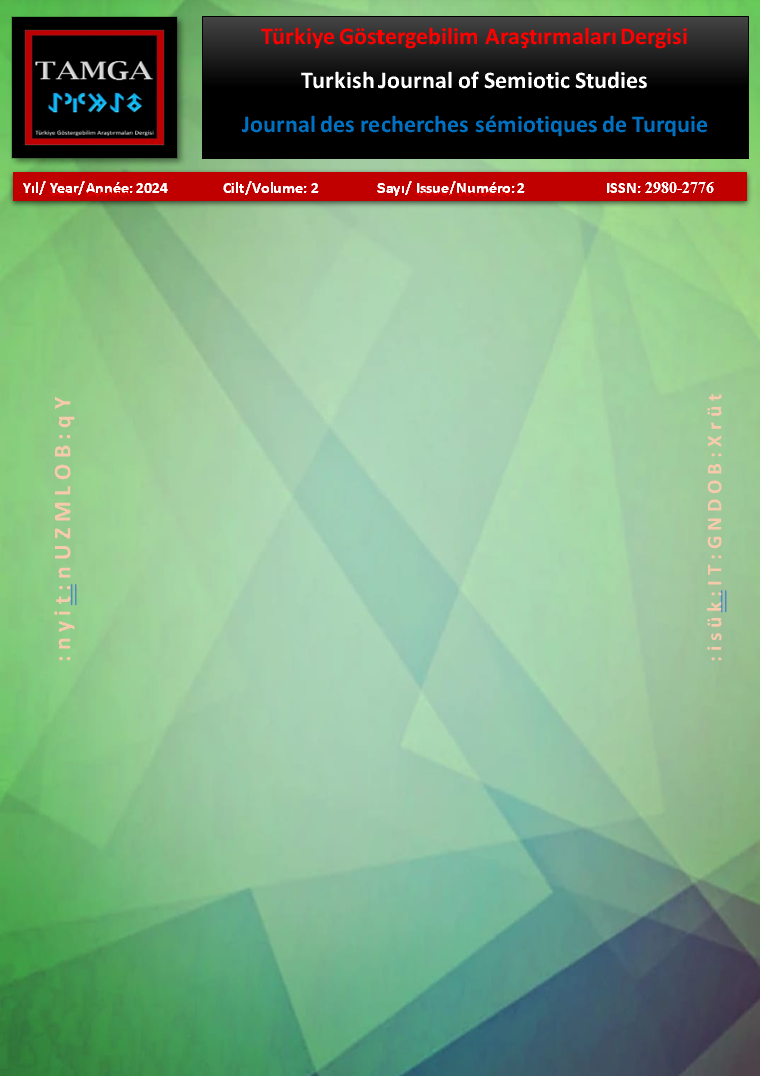Musical allusions in Kazuo Ishiguro's Nocturnes as an intermedial component
DOI:
https://doi.org/10.5281/zenodo.14568501Keywords:
Nocturne, Kazuo Ishiguro, Chopin, intermedialityAbstract
This article examines the collection of short fiction Nocturnes: Five Stories of Music and Nightfall (2009) by Kazuo Ishiguro, proposing a framework to explore the extent to which iconic principles manifest within literary texts. Employing critical tools such as narratology and intermediality studies, the analysis reveals leitmotif clusters, structural patterns, and musical allusions within the text’s poetics. The findings suggest that the novella collection represents a concentrated expression of the interplay between music and literature, where music contributes to setting creation, character portrayal, and plot development. The study also concludes on the efficacy of musical forms when transposed into another semiotic system.
References
Bakhtin, M. (1979). The problem of the text in linguistics, philology, and other humanities: An attempt at philosophical analysis. In S. G. Bocharov (Ed.), Aesthetics of verbal art. Iskusstvo. (pp. 281-307).
Baudrillard, J. (1981). Simulacra and simulation (S. F. Glaser, Trans.). The University of Michigan Press.
Brautigan, R. (1971). Revenge of the lawn. Simon & Schuster.
Cheng, C. (2010). The margin without centre. Peter Lang Verlag.
Cuevas, I. M. A. (2005). “Chuff, chuff, chuff”, “tick, tick, tick” and handel in between: The iconic value of music in V. Woolf’s “Between the Acts”. In Proceedings of the conference on iconicity in language and literature, Cracow, March 2005.
Czerny, Carl. (1979). School of practical composition: Complete treatise on the composition of all kinds of music (Josh Bishop, Trans.). Robert Cocks & Company.
Frank, E. (2024). Simultaneity of the senses in the “Sirens” chapter: Intermediality and synaesthesia in James Joyce’s Ulysses. Open cultural studies, 8(1), 1-14.
Groes, S., & Matthews, S. (2010). Introduction: ‘Your words open windows for me’: The art of Kazuo Ishiguro. In S. Matthews & S. Groes (Eds.), Kazuo Ishiguro: Contemporary critical perspectives. Bloomsbury Publishing. (pp. 1-8).
Hansen-Løve, A. A. (1983). Intermedialität und Intertextualität: Probleme der Korrelation von Wort- und Bildkunst [Intermediality and intertextuality: Problems of the correlation between word and visual art]. In Dialog der texte. Wiener Slawistischer Almanach. Sonderband 11. (pp. 291-360).
Hejmej, A. (2018). Musicality of a literary work. Peter Lang Verlag.
Holmes, C., & Rich, K. M. (2021). On rereading Kazuo Ishiguro. MFS modern fiction studies, 67(1), 1-19.
Huang, Y.-M. (2013). Musicians’ Enigma in Kazuo Ishiguro’s Nocturnes. In The Asian conference on ethics, religion & philosophy 2013 official conference proceedings. National Changhua University of Education. (pp. 22-35).
Ishiguro, K. (2009). Nocturnes: Five stories of music and nightfall. Faber and Faber.
Kallberg, Jeffrey. (2000). ‘Voice’ and the Nocturne. In B. Brubaker & J. Gottlieb (Eds.), Voice and the Nocturne, in pianist, scholar, connoisseur: Essays in honour of Jacob Lateiner. Pendragon Press. (pp. 1-46).
Kuznetsov, K. (1925). Historical forms of the Nocturne. Iskusstvo, (2), 129-130.
Lotman, Y. (2000). Struktura khudozhestvennogo teksta [The structure of the artistic text]. Iskusstvo.
Mazullo, M. (2012). Alone: Kazuo Ishiguro and the problem of musical empathy. The Yale review, 100(2), 78-98.
Mei, L. (2016). Musicalization of modern fictions-A case study of Kazuo Ishiguro. Foreign literature studies, 38(4), 73-81.
Nocturne. (2022, January 17). Encyclopedia Britannica. Retrieved October 4, 2024, from https://www.britannica.com/art/nocturne.
Opieński, H. (1931). Chopin’s letters. Translated from the original Polish and French with a preface and editorial notes by E. L. Voynich. Alfred A. Knopf.
Oxford University Press. (2024). Nocturne. In Oxford English Dictionary. Retrieved October 4, 2024, from https://doi.org/10.1093/OED/1620413556.
Rodríguez-Peralta, P. (1993). The modernist nocturno and the nocturne in music. Hispanic Journal, 14(1), 143-155.
Shaffer, B. W. (2009). ‘Somewhere just beneath the surface of things’: Kazuo Ishiguro’s short fiction. In S. Matthews & S. Groes (Eds.), Kazuo Ishiguro: Contemporary critical perspectives. Bloomsbury Publishing. (pp. 9-19).
Smyth, G. (2011). Waiting for the performance to begin: Ishiguro's musical imagination. In S. Groes & B. Lewis (Eds.), Kazuo Ishiguro: New critical visions of the novels. Palgrave Macmillan. (pp. 144-156).
Wang, X. L. (2021). Musicalization of the structure of novels: Kazuo Ishiguro’s transmedia storytelling. Journal of Shanghai Jiaotong University, 13(4), 15-20.
Wolf, W. (1999). The musicalization of fiction: A study in the theory and history of intermediality. Amsterdam University Press.
Wong, C. F. (2015). Oppositional narratives of Nocturnes. In C. F. Wong & H. Yildiz (Eds.), Kazuo Ishiguro in a global context. Routledge. (pp. 133-143).
Downloads
Published
How to Cite
Issue
Section
License
Copyright (c) 2024 Stacy Olive JARVIS

This work is licensed under a Creative Commons Attribution 4.0 International License.



